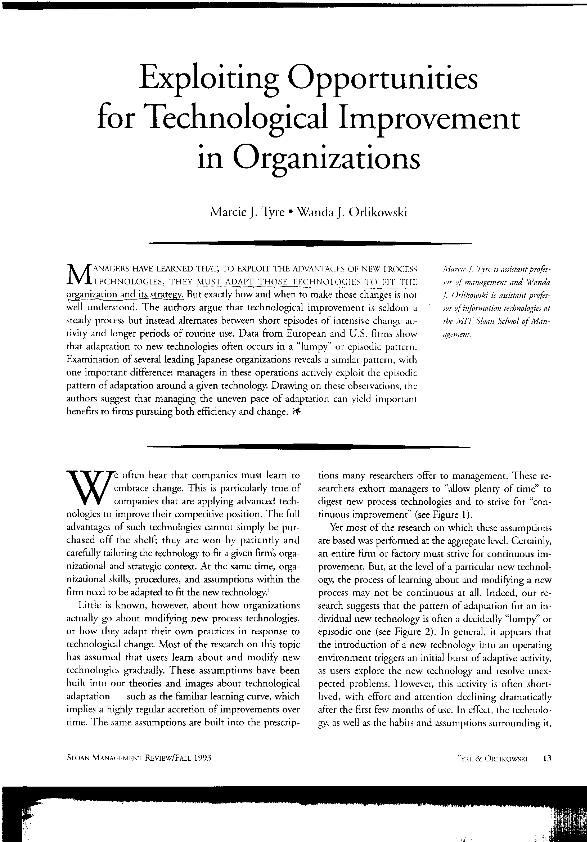Exploiting opportunities for technological improvement in organizations

Contenido multimedia no disponible por derechos de autor o por acceso restringido. Contacte con la institución para más información.
| Tag | 1 | 2 | Valor |
|---|---|---|---|
| LDR | 00000nab a2200000 i 4500 | ||
| 001 | MAP20071019940 | ||
| 003 | MAP | ||
| 005 | 20080418120004.0 | ||
| 007 | hzruuu---uuuu | ||
| 008 | 940623e19930923usa|||| | |00010|eng d | ||
| 040 | $aMAP$bspa | ||
| 084 | $a922.13 | ||
| 100 | 1 | $0MAPA20080150730$aTyre, Marcie J. | |
| 245 | 1 | 0 | $aExploiting opportunities for technological improvement in organizations$cMarcie J. Tyre, Wanda J. Orlikowski |
| 520 | $aManagers have learned that, to exploit the advantages of new process technologies, they must adapt those technologies to fit the organization and its strategy. But exactly how and when to make those changes is no well undesrstood. the authors argue that technological improvement is seldom a steady process but instead alternates between short episodes of intensive change activity and longer periods of routine use. Data from European and U.S. firms show that adaptation to new technologies often occurs in a "lumpy" or episodic pattern. Examination of several leading Japanese organizations reveals a similar pattern, with one important difference: managers in these operations actively exploit the episodic pattern of adaptation around a given technology. Drawing on these observations, the authors suggest that managing the uneven place of adaptation can yield important benefits to firms pursuing both efficiency and change | ||
| 650 | 1 | 1 | $0MAPA20080569815$aOrganizaciones |
| 650 | 1 | 1 | $0MAPA20080586546$aNuevas tecnologías |
| 650 | 1 | 1 | $0MAPA20080555061$aManagement |
| 650 | 1 | 1 | $0MAPA20080606091$aEstrategia empresarial |
| 650 | 1 | 1 | $0MAPA20080612580$aSistemas de información |
| 650 | 1 | 1 | $0MAPA20080582807$aSistemas expertos |
| 700 | 1 | $0MAPA20080270667$aOrlikowski, Wanda J. | |
| 740 | 0 | $aSloan management review | |
| 773 | 0 | $wMAP20077000185$tSloan management review$dBoulder$gFall 1993 ; p. 13-26 |

